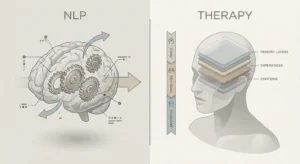Ever set a goal, got excited, made a plan and still didn’t follow through?
You’re not alone. More than 90% of people fail to reach their goals. It’s not because they’re lazy. It’s because they rely on willpower instead of systems. They want the result but skip the steps that make it possible. That’s why it’s important to learn how to actually achieve your goals with a system that works.
Maybe you’ve said, “This time I’m serious,” only to fall off a week later. Life gets busy, motivation fades, and that big goal ends up back on the shelf again.
That’s where this guide comes in. If you’ve struggled with follow-through, this is the no-fluff, real-world breakdown of how to actually achieve your goal step by step. You’ll learn how to set clear targets, break them into simple actions, and build habits that stick even on the hard days.
We’ll also cover why most goals fail and what you can do instead to stay focused, avoid burnout, and finally start seeing progress that lasts.
So read on you’re about to turn your goal into something real.
Why Most People Fail to Achieve Their Goals
Most people don’t fail because their goal is too ambitious. They fail because they lack a solid goal-setting strategy or they’re missing a system altogether.
Think about it. “Get in shape,” “earn more money,” or “be more productive” sound nice, but what do they actually mean? Without a clear target, your brain doesn’t know what to aim for. You end up doing random things, hoping they’ll add up to something meaningful. Spoiler: They usually don’t.
Another common reason? People start with a burst of motivation but don’t have a system to keep going when that excitement fades. And it always fades. Life gets in the way work piles up, energy dips, and suddenly that goal becomes “something I’ll get back to next week.”
Let’s break down why most people struggle with goal achievement:

The Goal Isn’t Clear
If you can’t explain your goal in one sentence what it is, when it’s due, and how you’ll know it’s done it’s probably too fuzzy. Vague goals lead to vague results.
There’s No Real Plan
People focus on outcomes but ignore the process. They dream about the finish line but don’t map the steps to get there. Without a plan, motivation turns into stress, then avoidance.
They Rely on Willpower
Willpower is great for short bursts. But it’s not meant to carry your entire routine. When life gets stressful or you’re tired, willpower disappears. That’s when most people give up.
They Don’t Track Anything
If you’re not tracking progress, you’re guessing. And when you guess, it’s easy to convince yourself that you’re failing even if you’re not. Or worse, that you’re doing more than you really are.
Setbacks Feel Like the End
One bad week and it’s over. But missing a step isn’t a failure. It’s feedback. The people who succeed are the ones who adjust and keep going.
Step-by-Step Process How To Actually Achieve Your Goals
Setting a goal is the easy part. Reaching it takes structure. The people who follow through don’t have more motivation they have a better system. Here’s how to build one that works, even when life gets messy.

Step 1. Get Clear on What You Actually Want
Forget the vague stuff. If your goal isn’t specific, your brain won’t know what to focus on. Instead of “get fit,” say “walk 30 minutes a day, 5 days a week.” Instead of “make more money,” say “earn $1,000 from freelance work in 3 months.”
That’s the foundation of an effective goal-setting system.
Make it measurable and time-bound. Ask:
- What exactly do I want to achieve?
- By when?
- How will I know I did it?
Use the SMART method if you need structure:
- Specific
- Measurable
- Achievable
- Realistic
- Time-bound
Step 2. Break It Down Into Micro-Goals
One of the best ways to follow through on your goals is to break them into small, actionable steps. Big goals feel overwhelming, but small wins feel doable
Want to write a book? Don’t start with “write chapter one.” Start with “Write for 20 minutes a day.” That’s progress you can repeat. Small steps build confidence. And confidence keeps you going.
Step 3. Know Your “Why”
Without personal meaning, your goals won’t stick. Connect your outcome to a deeper reason. This creates emotional energy crucial for staying the course during tough weeks. Ask yourself:
- Why does this matter to me?
- What will my life look like if I follow through?
- What will it cost me if I don’t?
Write it down. Keep it visible. When things get hard and they will your “why” is what brings you back. This internal motivation becomes your most powerful goal-setting system.
Step 4. Set Up Your Environment to Support You
Your surroundings play a big role in whether you stick to your productivity habits. Want to journal daily? Leave your notebook open. Want to run in the morning? Lay your shoes by the door.
Or if your goal is to read every night, put the book on your pillow. If it’s to eat healthier, remove junk from the house and prep your meals on Sunday. Make the right choice the default, not the difficult one.
Your environment should remind you of your goal not distract you from it.
Step 5. Build a System, Not a To-Do List
To-do lists are great, but systems are better. A system is a routine that repeats.
- Want to get fit? Make exercise a part of your morning.
- Want to write more? Set a writing time every day at 8 a.m.
- Want to save money? Automate your transfers every payday.
The less you rely on daily motivation, the more you’ll get done.
Step 6. Track Your Progress
Progress keeps you going. But if you don’t track it, you won’t see it.
You don’t need fancy apps. A notebook, a habit tracker, or a simple checklist works. The goal is to measure what matters and stay honest with yourself.
And yes, celebrate small wins tracked consistently, which are what ultimately achieve your goals.
Step 7. Don’t Go It Alone Create Accountability
Accountability keeps you honest when your motivation fades.
- Tell someone your goal.
- Set a check-in day.
- Join a group or find a buddy working on something similar.
When someone else knows what you’re trying to do, you’re far more likely to follow through.
Step 8. Expect Setbacks and Plan for Them
You’re going to miss a day. Maybe a week. It happens.
The key is to stop thinking of that as a failure. Missing one workout doesn’t erase progress. Eating one bad meal doesn’t kill your health. It’s what you do next that matters. The goal isn’t perfection. It’s progress.
Mindset Shifts That Separate Goal-Getters From Dreamers
While a solid action plan is critical, your mindset shapes how you approach your goals. These mindset shifts will keep you on track when the going gets tough:

- Progress Beats Perfection
Stop waiting for the perfect moment or plan. Progress, even imperfect, will get you much further. Adjust as you go, but always keep moving. - Act Like the Person You Want to Be
Think about what someone who already achieved your goal would do today. Want to run a 5K? Act like a runner. Want to grow your business? Make decisions like an entrepreneur. Your actions shape your identity. - Think Long-Term But Focus Short-Term
While it’s important to have big dreams, focus on what you can do today. Breaking your big goals into small, consistent actions will move you closer each day. - You Don’t Need to Feel Motivated You Just Need to Start
Motivation is unreliable. Action comes first. Once you start, momentum will follow. Don’t wait for motivation create it by taking that first step. - Setbacks Aren’t the End They’re Feedback
Missing a workout or missing a deadline? It’s not failure it’s valuable feedback. Learn from setbacks, adjust your approach, and keep going. Consistency is built through learning, not perfection.
Tools & Resources to Support Goal Achievement

You’ve got the plan. You’ve got the mindset. Now let’s make the process easier with a few tools that help you stay on track without adding stress or complexity.
These aren’t magic. They won’t do the work for you. But they can take the pressure off your memory, keep you focused, and give you real proof of your progress.
Goal & Habit Tracker Apps
Simple apps can help you visualize progress and build momentum with daily wins.
- Streaks (iOS): Track up to 12 habits a day. Great for visual motivation.
- Habitica (iOS/Android): Turns your habits into a game with points and rewards.
- Todoist: Combine daily tasks with long-term goals in one clean dashboard.
- Notion: If you want full control, create a custom goal dashboard and habit tracker.
Choose one that’s easy to use, not one that looks the fanciest.
Journals or Paper Planners
If you like writing things down, use a notebook or planner to track goals and habits.
- Create a simple weekly goal page.
- Log what worked and what didn’t each day.
- Use bullet points to keep it quick and easy.
The key is consistency not perfection. You don’t need to write a novel. A sentence or two is enough.
Printable Goal-Setting Templates
Print-and-fill worksheets help you stay focused without needing another app.
Include:
- Your main goal
- Why it matters
- Weekly action steps
- Habit checklist
- Monthly review section
Accountability Tools
Accountability makes a huge difference especially when you’re working toward something big.
- Use Google Calendar to set weekly check-ins with yourself.
- Share your progress with a friend, coach, or group chat.
- Set a recurring email to remind yourself of your “why.”
You don’t need someone watching your every move just someone who’ll notice if you stop showing up.
Books That Actually Help
If you want to go deeper, here are a few no-nonsense books with strategies that actually work:
- Atomic Habits by James Clear How to build systems and make habits stick.
- The One Thing by Gary Keller How to focus on what matters most.
- Finish by Jon Acuff How to get past perfectionism and actually complete what you start.
- Deep Work by Cal Newport How to focus in a world full of distractions.
Read just one of these, take one idea, and put it into practice. That’s where change starts. You don’t need 10 tools. You need one or two that work for you. The simpler your system, the more likely you are to use it.
Conclusion: Make This the Year You Actually Do It
Most people set goals. Few follow through. The difference? It’s not talent. It’s not luck. It’s consistency and a system that works even when motivation fades.
You now have that system. You’ve seen why most people quit with vague goals, no plan and relying on willpower. And you’ve got the tools to avoid those traps: clear targets, small steps, a strong “why,” real accountability, and habits that stick.
You don’t have to wait for Monday. Or January. Or the perfect moment. You just need to start. Pick one goal. One habit. One step. Do it today before you scroll to the next thing before you forget. That small move? It’s proof you’re doing it differently this time.
This isn’t about chasing perfection. It’s about showing up again tomorrow. So make this the year you stop planning and start finishing. Your goals aren’t going to chase you. Go get them.
Frequently Asked Questions About Achieving Your Goals
Q1: Why is setting goals important for success?
Setting goals gives direction, boosts motivation, and provides measurable benchmarks for progress. Without clear goals, it’s easy to lose focus or procrastinate. Achievable goals act as a roadmap, helping you stay accountable and build momentum toward long-term success.
Q2: How do you actually achieve your goals step by step?
Start by writing down specific, measurable goals. Break them into smaller milestones, set deadlines, and track progress regularly. Stay consistent, review setbacks as lessons, and adjust when needed. Daily habits aligned with your vision are key to making goals a reality.
Q3: What are the risks of not setting realistic goals?
Unrealistic goals often lead to frustration, burnout, and loss of motivation. Overambitious targets can create stress and reduce confidence if progress feels impossible. Setting realistic, achievable goals minimizes these risks while still encouraging growth and personal development.
Q4: Does achieving goals require investing money?
Some goals require financial investment, such as starting a business or fitness training, but many can be achieved with free resources and consistent effort. The key investment is often time, discipline, and persistence rather than money.
Q5: Is it better to set short-term or long-term goals?
Short-term goals build quick wins and momentum, while long-term goals provide vision and direction. The best strategy is combining both: use short-term goals as stepping stones toward achieving bigger long-term objectives. This balance keeps you motivated and on track.





